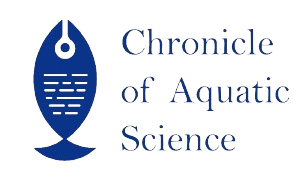| File | Action |
|---|---|
| Sous Vide in Seafood: A Novel Approach to Modern Processing Techniques | Download |
- 919088951040 call us
- chronicleofaquaticscience@gmail.com Mail us
CoAS_V2IS3_02
Review
Manuscript ID: CoAS_V2IS3_02
Sous Vide in Seafood: A Novel Approach to Modern Processing Techniques
Ankures Bhattacharya*, Supratim Chowdhury and Asik Ikbal
Abstract
Seafood's short shelf life is due to its high-water activity, neutral pH, and rich nutrient content. Sous vide technology, originating from the French phrase "under vacuum," is a method of cooking in which fish and fishery products are sealed in vacuum-packed bags and cooked at precisely controlled low temperatures over extended periods. Vacuum packaging prevents recontamination, oxidation, aerobic bacterial growth, and moisture loss while preserving aroma compounds. However, the anaerobic environment may promote the growth of spore-forming pathogens. This review aims to explore the current state of sous vide technology applied to fish and fishery products. It highlights its benefits, such as enhanced texture, flavour preservation, and retention of nutritional quality. Additionally, the paper examines the potential challenges associated with sous vide cooking, such as microbial safety and packaging concerns, while also offering insights into future research opportunities and commercial applications.
Keywords
Sous vide, cook-chill, cook-freeze, thermal processing, novel techniques
Reference
A Puertollano, M., Puertollano, E., Alvarez de Cienfuegos, G., & A de Pablo, M. (2011). Dietary antioxidants: immunity and host defense. Current topics in medicinal chemistry, 11(14), 1752- 1766.
Evans, J., Russell, S., & James, S. (1996). Chilling of recipe dish meals to meet cook—chill guidelines. International Journal of Refrigeration, 19(2), 79-86.
Hosomi, R., Yoshida, M., & Fukunaga, K. (2012). Seafood consumption and components for health. Global journal of health science, 4(3), 72.
Kato, H. C. D. A., Lourenço, L. D. F. H., Araújo, E. A. F., Sousa, C. L., Joele, M. R. S., & Ribeiro, S. D. C. A. (2016). Change in physical and chemical characteristics related to the binomial time- temperature used in sous pasteurization see Tambaqui (Colossoma macropomum). Arquivo Brasileiro de Medicina Veterinária e Zootecnia, 68, 224-232
Rajkovic, A., Smigic, N., & Devlieghere, F. (2010). Contemporary strategies in combating microbial contamination in food chain. International Journal of Food Microbiology, 141, S29-S42.
Redmond, G., Gormley, R. T., Butler, F., Dempsey, A., Oxley, E., & Gerety, A. (2004). Freeze-chilling of ready-to-eat meal components. Teagasc.
Evans, J., Russell, S., & James, S. (1996). Chilling of recipe dish meals to meet cook—chill guidelines. International Journal of Refrigeration, 19(2), 79-86.
Hosomi, R., Yoshida, M., & Fukunaga, K. (2012). Seafood consumption and components for health. Global journal of health science, 4(3), 72.
Kato, H. C. D. A., Lourenço, L. D. F. H., Araújo, E. A. F., Sousa, C. L., Joele, M. R. S., & Ribeiro, S. D. C. A. (2016). Change in physical and chemical characteristics related to the binomial time- temperature used in sous pasteurization see Tambaqui (Colossoma macropomum). Arquivo Brasileiro de Medicina Veterinária e Zootecnia, 68, 224-232
Rajkovic, A., Smigic, N., & Devlieghere, F. (2010). Contemporary strategies in combating microbial contamination in food chain. International Journal of Food Microbiology, 141, S29-S42.
Redmond, G., Gormley, R. T., Butler, F., Dempsey, A., Oxley, E., & Gerety, A. (2004). Freeze-chilling of ready-to-eat meal components. Teagasc.
Renna, M., Gonnella, M., Giannino, D., & Santamaria, P. (2014). Quality evaluation of cook‐chilled chicory stems (Cichorium intybus L., Catalogna group) by conventional and sous vide cooking methods. Journal of the Science of Food and Agriculture, 94(4), 656-665.
Schellekens, M. (1996). New research issues in sous-vide cooking. Trends in Food Science & Technology, 7(8), 256-262.
Schmidt, C. F., Lechowich, R. V., & Folinazzo, J. F. (1961). Growth and Toxin Production by Type E Clostridium Botulinum Below 40° F a. Journal of Food Science, 26(6), 626-630.
Siddiqui, M. W., and Rahman, M. S. (Eds.). (2014). Minimally processed foods: Technologies for safety, quality, and convenience. Springer.
Schellekens, M. (1996). New research issues in sous-vide cooking. Trends in Food Science & Technology, 7(8), 256-262.
Schmidt, C. F., Lechowich, R. V., & Folinazzo, J. F. (1961). Growth and Toxin Production by Type E Clostridium Botulinum Below 40° F a. Journal of Food Science, 26(6), 626-630.
Siddiqui, M. W., and Rahman, M. S. (Eds.). (2014). Minimally processed foods: Technologies for safety, quality, and convenience. Springer.
- Published online
- 30th Aug, 2024
How to Cite the Article
Bhattacharya A, Chowdhury S and Ikbal I. Sous Vide in Seafood: A Novel Approach to Modern Processing Techniques. Chron Aquat Sci. 2024; 2(3): 8-17
Copyright
This is an open-access article distributed under the terms of the Creative Commons Attribution License (CC BY). The use, distribution or reproduction in other forums is permitted, provided the original author(s) and the copyright owner(s) are credited and that the original publication in this journal is cited, in accordance with accepted academic practice. No use, distribution or reproduction is permitted which does not comply with these terms.

Sous Vide in Seafood: A Novel Approach to Modern Processing Techniques


